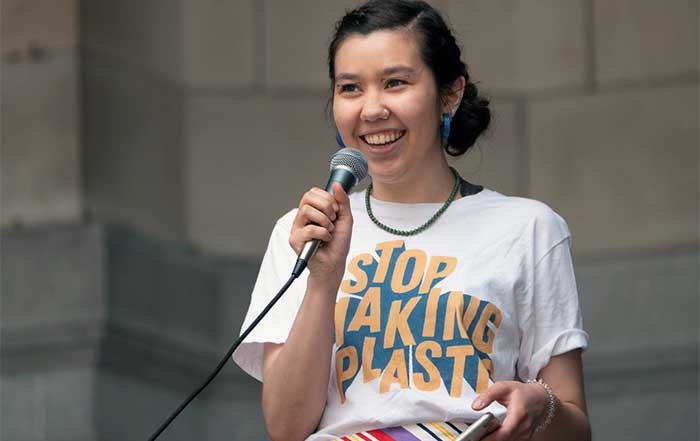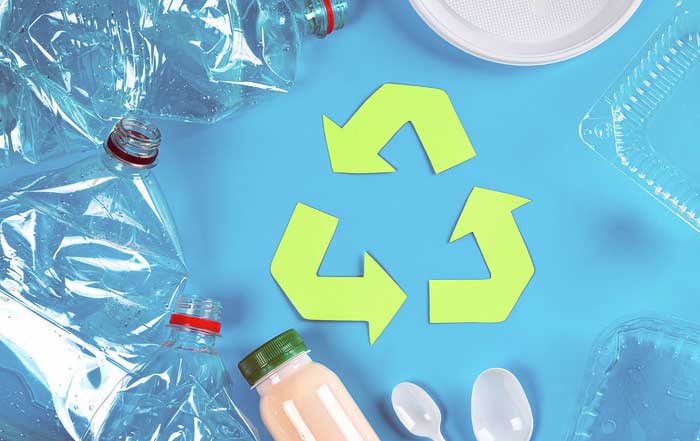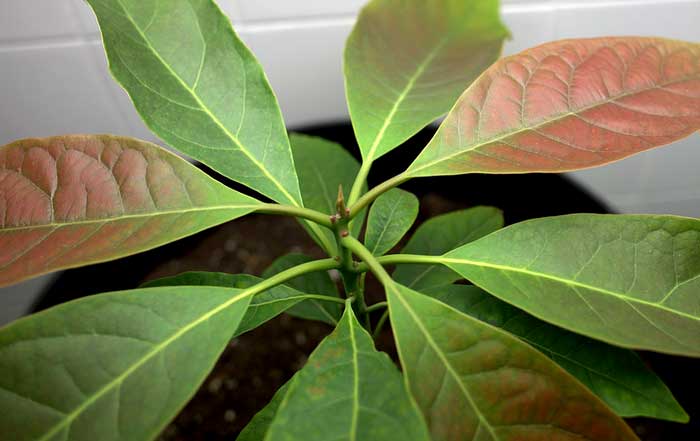In a changing world where natural resources are increasingly under pressure and environmental challenges become ever more pronounced, energy conservation and the generation of home-based electricity have emerged as central pillars in the quest for a sustainable future. The modern household is witnessing a paradigm shift where efficient energy use is no longer merely an aspiration but a practical, integrated lifestyle strategy. Across urban and rural communities alike, stakeholders ranging from policymakers and business leaders to conscientious homeowners are embracing technologies and methodologies that promise to reduce energy consumption, lower operational costs, and foster environmental stewardship. The year 2025 stands as a testament to a collective commitment that is driving forward innovation, economic resilience, and environmental responsibility on a global scale.
The Imperative of Energy Conservation
Energy conservation is recognized as a critical necessity rather than a fleeting trend. The ongoing challenges associated with overconsumption, resource depletion, and adverse environmental impacts have spurred a multifaceted approach to minimizing energy waste. This approach is evident in the way modern societies prioritize both technological innovation and behavioral adaptation. By integrating efficient appliances, advanced heating and cooling systems, and intelligent lighting solutions, households are reducing their dependency on traditional power grids, thereby fostering a more resilient and self-reliant energy ecosystem.
The shift towards energy-efficient practices is underpinned by a robust framework of research, investment, and supportive public policies. Governments around the globe are providing incentives and implementing regulatory standards that encourage the use of renewable energy sources, while research institutions and industry leaders collaborate on innovations that reduce energy demand. The resulting synergy among these efforts creates an environment where economic growth and environmental protection coexist harmoniously, illustrating that sustainable progress is achievable through deliberate, well-informed actions.
Efficient Lighting Solutions
Evolution of Lighting Technologies
Residential lighting has undergone a transformative evolution, with modern technologies supplanting the antiquated and energy-inefficient incandescent bulbs. Philips Lighting, Osram, and Lumileds have led the charge in refining light-emitting diode (LED) and compact fluorescent lamp (CFL) technologies, achieving breakthroughs in energy efficiency and durability. LED lighting systems now convert a far greater portion of electricity into visible light, operating at efficiencies that result in significantly lower heat production and reduced energy wastage.
The longevity of LED bulbs, which often surpasses that of their traditional counterparts by a factor of twenty-five, contributes to both economic savings and a lower overall carbon footprint. Advances in adjustable brightness and color temperature have also enhanced the appeal of these solutions, making them adaptable to a wide range of residential settings. Homeowners are now able to enjoy a refined lighting experience that aligns with contemporary energy conservation goals while benefiting from reduced utility bills.
Smart Lighting and Automation
The integration of smart technology into lighting systems has elevated the efficiency and functionality of home illumination. Modern smart lighting systems incorporate sensors, wireless connectivity, and artificial intelligence to dynamically adjust brightness levels in response to ambient conditions. Through the use of voice-activated assistants offered by Amazon and Google, these systems not only facilitate hands-free operation but also provide insights into energy consumption patterns, enabling residents to pinpoint and mitigate inefficiencies.
Automated controls, such as motion detectors and daylight sensors, further enhance energy savings by ensuring that lights are activated only when necessary. By linking these controls with home energy management platforms, consumers can track usage in real time and adjust their routines accordingly. This level of integration creates an environment where energy conservation is embedded into daily life, thus contributing to both reduced environmental impact and operational cost savings.
For those interested in exploring related topics, further insights on sustainable home practices can be found on this resource.
Optimizing Heating and Cooling Systems
Impact of HVAC on Residential Energy Consumption
Heating, ventilation, and air conditioning (HVAC) systems are among the largest consumers of energy in residential settings. In modern homes, these systems operate continuously to regulate indoor temperatures and maintain comfort across varying weather conditions. The operational demands placed on HVAC systems necessitate the adoption of measures that enhance their efficiency and mitigate unnecessary energy loss. Upgrading insulation, sealing air leaks, and investing in energy-efficient HVAC equipment are critical steps that not only reduce energy consumption but also extend the lifespan of these systems.
By optimizing HVAC performance, households can achieve a delicate balance between maintaining a comfortable indoor climate and reducing overall energy demand. Continuous maintenance—such as periodic filter replacements and system diagnostics—ensures that the equipment operates at peak efficiency, thereby lowering utility costs and minimizing environmental impact. Moreover, these energy-saving measures often yield a dual benefit by contributing to economic savings that accumulate over time.
Upgrading to Programmable and Smart Thermostats
The advent of programmable and smart thermostats has revolutionized how households manage their heating and cooling needs. These devices allow for precise temperature control based on occupancy patterns and daily routines. In contrast to manual adjustments, smart thermostats automatically calibrate temperature settings, ensuring that energy is used only when necessary. Advanced models, developed by companies such as Google, Apple, and Amazon, integrate seamlessly with broader home automation systems and can be controlled remotely via smartphones.
Smart thermostats analyze historical usage data and incorporate weather forecasts to optimize temperature settings throughout the day. This proactive approach not only reduces energy wastage but also contributes to long-term cost savings. Homeowners who invest in these technologies report a noticeable decline in energy bills, reinforcing the notion that intelligent temperature management is an integral component of modern energy conservation strategies.
For additional perspectives on sustainable home management, readers may explore insights on embracing sustainable living and optimizing time management in 2025.
Insulation and Sealing: A Key Component
The effectiveness of any HVAC system is intrinsically linked to the quality of a home’s insulation and sealing. Poorly insulated homes experience significant heat loss during winter and unwanted heat gain during summer, both of which necessitate additional energy expenditure to maintain comfortable temperatures. Modern insulation materials, such as advanced cellulose and foam-based solutions, offer superior performance by preventing thermal bridging and reducing the need for constant heating or cooling.
Proper weatherstripping of windows, doors, and other structural gaps is equally critical. By minimizing air leaks, homeowners can maintain stable indoor temperatures and reduce the operational demands placed on their HVAC systems. Professional services that specialize in energy-efficient home upgrades often provide comprehensive assessments and tailored recommendations, ensuring that each residence achieves the highest level of energy conservation possible.
Enhancing Appliance Efficiency
The Role of Energy-Efficient Appliances
Household appliances are an essential facet of daily life, yet they also account for a significant portion of residential energy consumption. As energy standards become more stringent and consumer awareness increases, manufacturers such as Samsung, LG Electronics, and Whirlpool have responded by introducing products that meet rigorous energy efficiency criteria. These appliances are designed to perform optimally while consuming considerably less power than their older counterparts.
The adoption of appliances certified by international standards, such as the Energy Star label, underscores a commitment to environmental sustainability and cost efficiency. Such products incorporate innovative technologies like variable speed compressors, adaptive sensors, and smart connectivity that enable real-time energy tracking. These features not only enhance performance but also allow homeowners to monitor and adjust usage based on specific needs, thereby reducing overall energy demand.
Practical Measures for Existing Appliances
Even for households that cannot immediately replace all aging appliances, practical measures exist to enhance efficiency. Simple adjustments—such as optimizing refrigerator temperatures, running dishwashers and washing machines with full loads, and unplugging devices that are not in active use—can cumulatively result in substantial energy savings. The integration of smart plugs and power strips with on/off switches provides an effective means of curbing standby power consumption, further contributing to lower monthly utility bills.
For those interested in detailed strategies on reducing energy waste, additional insights are available on minimizing waste in everyday life for a sustainable future.
Replacements, Upgrades, and Smart Integration
When feasible, replacing outdated appliances with modern, energy-efficient models offers the most direct path to reducing consumption. Homeowners are encouraged to evaluate the operational costs of long-standing devices and consider upgrades that promise faster payback periods. This proactive approach, when paired with smart home systems, allows for seamless integration and real-time monitoring of appliance performance. Ultimately, the replacement of inefficient devices not only lowers energy consumption but also enhances the overall functionality and comfort of the home.
Implementing Smart Home Technologies
The Role of IoT in Residential Energy Management
The integration of the Internet of Things (IoT) into residential environments has revolutionized energy management by connecting disparate devices into a unified ecosystem. Through sophisticated home energy management systems, homeowners can monitor energy usage, control lighting, adjust thermostats, and manage appliances from a centralized platform. This interconnected network provides a granular view of energy consumption patterns, empowering users to identify areas where efficiency can be improved.
Smart home technologies extend beyond mere monitoring; they enable automated responses to fluctuations in energy demand. For instance, smart plugs and sensors can automatically reduce power consumption during peak periods, thereby contributing to overall grid stability. The convergence of IoT with energy management not only enhances user convenience but also bolsters a home’s energy-saving capabilities by ensuring that every component operates at its optimal level.
Further exploration of innovative home automation can be found on embracing unplugged learning for a sustainable future.
Intelligent Climate and Lighting Controls
Modern smart home systems are equipped with advanced climate and lighting controls that dynamically adjust settings based on occupancy, time of day, and ambient conditions. These systems, integrated with platforms provided by Google, Amazon, and Apple, offer unprecedented control over home environments. They use real-time data to modulate lighting brightness and adjust temperature settings, thereby ensuring that energy is used only when necessary.
The seamless interaction between these systems results in a highly responsive environment where energy waste is minimized without compromising on comfort. Homeowners benefit from a reduction in manual interventions, as the system learns from usage patterns and automatically implements energy-saving measures. This intelligent control over the domestic environment is a cornerstone of modern energy conservation strategies and underscores the potential for technology to drive sustainable practices.
Smart Plugs and Load Management Solutions
Smart plugs have become a popular entry point for homeowners seeking to optimize energy usage at a granular level. These devices monitor the power consumption of individual appliances and offer insights into usage trends. By enabling the automated shutdown of devices that are not in use, smart plugs help in significantly reducing phantom loads. The integration of these devices with larger energy management systems allows for real-time load management, ensuring that overall energy consumption is balanced and efficient.
For further reading on innovative approaches to sustainable energy management, one may refer to sustainable business practices as discussed by trusted organizations in the energy sector.
Water Heating Efficiency
Transition to Tankless Water Heaters
Water heating represents a considerable segment of a household's energy consumption, and traditional storage water heaters often operate inefficiently due to constant energy expenditure in maintaining a reservoir of hot water. The adoption of tankless water heaters has revolutionized this aspect of home energy use. Tankless systems, provided by industry leaders such as Rheem, Bradford, and Ariston, heat water on demand, thereby eliminating the standby losses associated with traditional heaters.
While the initial investment for tankless systems may be higher, the long-term benefits in terms of energy savings and operational efficiency are significant. These systems deliver hot water instantaneously, minimizing the wait time and reducing energy waste. Additionally, by incorporating digital controls and precise temperature regulation, modern tankless heaters ensure that water is heated only to the necessary degree, contributing further to energy conservation.
Temperature Settings, Insulation, and Low-Flow Fixtures
Even for households that continue to use traditional water heaters, energy efficiency can be enhanced through simple adjustments. Lowering the thermostat setting to an optimal level, typically around 120°F (49°C), can considerably reduce energy consumption while still providing adequate hot water for daily needs. Complementary measures such as insulating both the heater and the accompanying pipes help to minimize heat loss, ensuring that the stored water retains its temperature longer.
The installation of low-flow fixtures, including faucets and showerheads, also contributes to overall energy savings. These fixtures reduce the volume of hot water required for daily activities without compromising on performance, thereby lessening the burden on the water heating system. Collectively, these measures illustrate that significant energy savings can be achieved through relatively straightforward modifications in water usage and system management.
For additional perspectives on home efficiency, readers can explore energy conservation and home electricity generation.
Behavioral Changes for Energy Conservation
Cultivating Awareness and Community Education
While technological advancements provide the tools necessary for energy conservation, long-term success also hinges on behavioral changes within the household. Education and awareness campaigns are integral in cultivating a culture of sustainability. Through community initiatives, workplace programs, and educational curricula, individuals are gradually adopting daily habits that collectively contribute to reduced energy consumption. Simple actions—such as turning off lights when leaving a room, unplugging devices when not in use, and moderating the usage of energy-intensive appliances—serve as foundational steps in a broader strategy of energy conservation.
Community-led efforts, including neighborhood challenges and group purchasing programs for energy-efficient appliances, have proven effective in fostering a collective commitment to sustainability. By engaging residents in dialogue and encouraging shared responsibility, these initiatives help to create an environment where energy-saving practices become second nature. Resources on environmental awareness and sustainable practices are readily available on platforms like environmental awareness and sustainability education for a prosperous planet.
Moderating Appliance Usage and Operational Habits
In addition to technological interventions, the moderation of appliance usage plays a critical role in reducing overall energy consumption. Strategies such as scheduling laundry and dishwashing during off-peak hours can alleviate pressure on local power grids, while careful management of electronic devices can further diminish unnecessary energy draw. Homeowners are encouraged to adopt habits that not only save energy but also extend the life of appliances by preventing overuse and reducing wear and tear.
This pragmatic approach underscores that energy conservation is not solely the responsibility of advanced systems but also lies in the everyday choices made by individuals. By integrating small yet consistent changes into daily routines, households can achieve a cumulative effect that significantly lowers energy consumption over time.
Renewable Energy Integration
Solar Panels and Distributed Generation
The integration of renewable energy sources into residential settings has taken center stage in the sustainable energy landscape of 2025. Solar panels have become one of the most popular and accessible means for homeowners to generate their own electricity. Advances in photovoltaic (PV) technology have increased panel efficiency and reduced installation costs, making solar energy an increasingly attractive option. Modern PV panels not only offer a high conversion rate but also come with innovative features such as integrated battery storage systems that ensure energy availability during periods of low sunlight.
Government incentives and progressive policies have further spurred the adoption of solar power. Many jurisdictions now offer rebates, tax credits, and net metering programs that allow homeowners to sell excess energy back to the grid. This dynamic interplay between individual generation and centralized grid systems underscores the growing potential of distributed generation as a viable alternative to traditional power sources.
For those seeking additional details on solar energy advancements, trusted resources such as the U.S. Department of Energy provide comprehensive information on the subject.
Wind Turbines for Residential Use
Wind turbines, although less common than solar panels in densely populated areas, represent another renewable energy solution that is gaining traction among homeowners. Small-scale wind turbines, designed to operate efficiently in variable wind conditions, harness kinetic energy to generate electricity. Their deployment is particularly suited to rural or coastal areas where wind speeds are consistently high. Innovations in turbine design have led to compact and aesthetically pleasing models that can be integrated into residential landscapes without compromising visual appeal.
Feasibility studies and meteorological assessments are often necessary to determine the suitability of wind power for a particular location. Once installed, these turbines contribute to energy independence by providing a steady source of renewable power. The dual benefits of reducing utility bills and lowering carbon emissions position wind energy as an important component in the modern energy portfolio.
Micro-Hydro Power and Biomass Energy
For properties situated near flowing water sources, micro-hydro power offers an excellent opportunity for decentralized electricity generation. By channeling the kinetic energy of moving water through turbines, households can generate a reliable supply of power with minimal environmental impact. Micro-hydro installations, while site-specific, benefit from a higher capacity factor compared to other renewables, making them an attractive option for long-term energy sustainability.
Biomass energy, derived from organic materials such as wood pellets and agricultural residues, provides another avenue for renewable power generation. Modern biomass systems are designed to maximize efficiency while minimizing emissions, thereby supporting a more sustainable energy ecosystem. Responsible sourcing and the integration of advanced combustion technologies are critical to ensuring that biomass energy remains a truly renewable resource.
Further insights into sustainable energy options are available on the urgent need for alternative energy in 2025 and global imperatives of resource preservation.
Geothermal Energy and Combined Heat and Power
Geothermal energy, which harnesses the Earth’s internal heat, offers a consistent and reliable energy source for residential applications. Although the installation of geothermal systems may involve higher upfront costs and technical challenges such as drilling and geological surveys, the long-term benefits in terms of energy efficiency and reduced emissions are considerable. When designed and implemented correctly, geothermal systems provide round-the-clock energy, making them ideal for both heating and electricity generation.
Combined Heat and Power (CHP), also known as cogeneration, is an innovative technology that simultaneously produces electricity and useful heat from a single fuel source. This dual-use approach significantly enhances overall energy efficiency by capturing waste heat that would otherwise be lost. CHP systems are particularly beneficial for households with consistent heating and hot water needs, as they contribute to both reduced energy costs and lower greenhouse gas emissions.
Energy Storage Solutions
The Critical Role of Battery Technologies
As renewable energy generation becomes increasingly decentralized, effective energy storage solutions are essential to ensure a stable and reliable power supply. Battery technologies, particularly lithium-ion and flow batteries, play a pivotal role in storing surplus energy produced by solar panels, wind turbines, and other renewable systems. These storage solutions bridge the gap between energy production and consumption, enabling homeowners to utilize stored energy during periods of low production.
Modern battery management systems use sophisticated algorithms to optimize charging and discharging cycles based on real-time data and electricity tariff rates. This level of intelligence not only maximizes the efficiency of storage systems but also prolongs battery life. The integration of these systems with smart home platforms further enhances their utility by allowing for seamless control and monitoring of energy flows.
For those interested in exploring advanced energy storage strategies, comprehensive resources can be found on sustainable home water conservation strategies for a thirsty planet.
Smart Grid Integration and Distributed Energy
The evolution of smart grids represents a transformative leap in the management and distribution of electricity. Unlike traditional grids, smart grids incorporate real-time data and two-way communication between utilities and consumers. This dynamic network allows households to not only generate and store their own energy but also to interact with the broader grid infrastructure. Homeowners who generate excess power can feed it back into the grid, earning credits through net metering programs and contributing to overall grid stability.
Smart grid technology also enables a more balanced distribution of energy, preventing overloading during peak usage periods and facilitating the integration of diverse renewable sources. The interplay between local generation, storage, and centralized distribution systems underscores a future in which energy flows more dynamically and sustainably, benefitting both individual households and the broader community.
Companies Leading by Example
Pioneers in Lighting and Home Technology
The forefront of energy conservation is marked by companies that consistently push the boundaries of technological innovation. Philips Lighting, Osram, and Lumileds have set new benchmarks in lighting efficiency, developing products that not only reduce energy consumption but also enhance the quality of light in residential settings. Their ongoing investments in research and development continue to yield breakthroughs that are instrumental in advancing sustainable practices.
Similarly, major appliance manufacturers such as Samsung, LG Electronics, and Whirlpool are reimagining household devices through the lens of energy efficiency. Their cutting-edge products integrate smart connectivity and adaptive technologies, ensuring that every appliance operates with minimal energy waste while delivering peak performance.
Innovations in Renewable Energy and Smart Home Integration
The renewable energy sector is witnessing rapid advancements, with companies like Rheem, Bradford, and Ariston leading the transformation of water heating systems. Their innovations in tankless water heaters and hybrid heating solutions exemplify the potential for modern technologies to significantly reduce energy consumption in residential settings.
In the realm of smart home technology, industry giants such as Google, Amazon, and Apple have been instrumental in developing ecosystems that seamlessly integrate various energy management devices. Their platforms enable homeowners to control everything from lighting to HVAC systems through intuitive interfaces, thereby simplifying the journey toward a fully optimized and sustainable home environment.
For additional insights on how businesses are driving environmental progress, readers are encouraged to visit the evolving landscape of sustainable business innovations.
A Multifaceted Approach to Sustainable Energy
Synergies Between Energy Efficiency and Renewable Generation
A comprehensive approach to energy conservation in residential settings is characterized by the strategic integration of efficient technologies and renewable energy sources. This multifaceted strategy not only reduces dependence on conventional energy but also enhances resilience and lowers operational costs. By embracing improvements in lighting, HVAC systems, appliance efficiency, and smart home technologies, households can achieve significant energy savings while contributing to broader environmental goals.
The incorporation of renewable energy solutions such as solar panels, wind turbines, micro-hydro systems, and geothermal installations further amplifies these benefits. When combined with advanced energy storage solutions and smart grid integration, these systems form a cohesive framework that supports both environmental sustainability and economic stability.
Behavioral Adaptations and Community Engagement
Alongside technological advancements, the success of energy conservation initiatives hinges on the willingness of individuals and communities to adopt energy-saving behaviors. By fostering a culture of mindfulness, communities can collectively reduce energy demand and promote sustainable living practices. Educational programs, public awareness campaigns, and community-led initiatives all play a vital role in reinforcing the importance of responsible energy consumption.
For those interested in learning more about community initiatives and environmental awareness, resources such as local community recycling initiatives paving the way for global impact offer valuable insights.
Generating Electricity at Home
Introduction to Home Electricity Generation
The prospect of generating electricity at home has captured the imagination of homeowners seeking independence from traditional power grids and a reduction in energy costs. With technological advancements making renewable generation systems more accessible and efficient, a growing number of households are embracing home electricity generation as a viable alternative. From solar and wind energy to micro-hydro and biomass, the options available allow for tailored solutions that match the unique characteristics of each property.
Home electricity generation not only provides environmental benefits by reducing greenhouse gas emissions but also offers economic advantages. The possibility of recouping initial investments through reduced utility bills and potential revenue from selling excess power creates a compelling case for adopting these technologies. Homeowners are increasingly empowered to take control of their energy destiny, transforming their residences into mini power plants that contribute to a cleaner and more resilient grid.
Solar Power Systems and Photovoltaic Advancements
Solar power remains at the forefront of home electricity generation due to its widespread applicability and decreasing costs. Modern photovoltaic systems, developed by leaders in the renewable energy sector, boast efficiencies that exceed previous generations of technology. The conversion of sunlight into electricity is facilitated by advanced PV panels that offer higher conversion rates and extended operational lifespans. Integrated with battery storage systems, these setups ensure a continuous supply of energy even during periods of low sunlight.
Government incentives and progressive policies continue to bolster the adoption of solar power. Programs offering rebates, tax credits, and net metering options enable homeowners to maximize the financial benefits of their investments. As a result, solar installations are not only environmentally responsible but also economically viable, often providing a break-even period within a few years of installation.
For a deeper understanding of the potential of solar energy, readers may visit trusted sources such as the National Renewable Energy Laboratory or Energy Star.
Wind, Micro-Hydro, and Alternative Renewable Options
Wind turbines offer a complementary solution to solar panels, particularly in regions with consistent wind patterns. Small-scale wind turbines have evolved to meet the needs of residential applications, providing a renewable energy source that can function effectively in both rural and semi-urban settings. Although the feasibility of wind power is contingent on local wind speeds and geographic considerations, the integration of wind energy into a household’s renewable portfolio can significantly enhance energy independence.
For properties with access to flowing water, micro-hydro power represents an alternative avenue for decentralized electricity generation. By harnessing the energy of moving water through turbines, households can generate consistent power with minimal environmental disruption. The reliability of micro-hydro systems, combined with their ability to operate continuously, makes them a strong candidate for homes located near streams or rivers.
Biomass energy, which utilizes organic materials for energy production, offers another option for home-based electricity generation. Modern biomass systems are designed to burn organic matter efficiently, converting waste into energy with a focus on minimizing emissions and promoting sustainability. These systems, when combined with other renewable solutions, create a diversified and resilient energy portfolio for the modern home.
Combined Heat and Power (CHP) Systems
Combined Heat and Power (CHP) systems provide a dual-purpose solution by simultaneously generating electricity and capturing waste heat for domestic use. This approach maximizes the efficiency of energy conversion and offers significant cost savings. CHP systems are particularly well-suited for households with consistent heating and hot water requirements, as the captured heat can be repurposed for space heating or other applications. The integration of CHP into home electricity generation exemplifies the innovative convergence of technologies that drive sustainable energy practices in 2025.
For additional information on alternative energy solutions, readers can explore sustainable electricity use in 2025: strategies and insights for work and home.
Energy Audits and Continuous Monitoring
Professional Energy Assessments
Comprehensive energy audits are essential in identifying inefficiencies that may be overlooked during routine household operations. Professional energy assessments involve a detailed analysis of insulation, HVAC systems, lighting, and appliances, yielding actionable insights that inform targeted improvements. These audits, conducted by certified professionals, provide homeowners with a clear roadmap for reducing energy consumption and enhancing overall system performance.
Energy audits often reveal subtle inefficiencies—such as undetected air leaks or outdated weather stripping—that collectively contribute to significant energy waste. By addressing these issues through a combination of technical upgrades and behavioral changes, households can optimize their energy usage and achieve measurable cost savings over time.
For insights into how energy audits can drive sustainability, readers may refer to effective dispute resolution: a pathway to sustainable living in 2025 and beyond.
Continuous Monitoring and Real-Time Feedback
The advent of continuous monitoring systems has transformed how households manage their energy consumption. These systems provide real-time data on energy usage, enabling homeowners to track consumption patterns and identify anomalies that may indicate inefficiencies or malfunctioning equipment. With the aid of advanced analytics and mobile applications, residents can receive immediate feedback and make informed decisions that further reduce energy waste.
This data-driven approach to energy management ensures that every watt of power is accounted for and utilized in the most efficient manner possible. The integration of smart sensors and feedback mechanisms has created a feedback loop where continuous improvements in energy conservation are both achievable and sustainable.
Economic and Environmental Benefits
Long-Term Cost Reductions and Investment Returns
The transition toward energy-efficient practices and home-based renewable generation is not only environmentally responsible but also economically advantageous. While the initial investments in modern technologies—such as solar panels, smart thermostats, and advanced insulation—may be significant, the long-term cost reductions often justify these expenses. Reduced utility bills, coupled with government incentives and potential revenue from surplus energy sales, create a compelling financial narrative for homeowners.
In many cases, the return on investment for energy efficiency upgrades and renewable energy installations is realized within a few years. This financial viability, combined with the environmental benefits of reduced greenhouse gas emissions, underscores the dual benefits of adopting sustainable energy practices.
Lower Carbon Footprint and Enhanced Resilience
Reducing energy consumption and generating electricity at home directly contributes to lowering a household’s carbon footprint. By decreasing reliance on fossil fuels and embracing renewable energy sources, households play a vital role in mitigating climate change and preserving natural resources. The resulting reduction in greenhouse gas emissions has far-reaching implications for global environmental health, supporting international efforts to combat environmental degradation.
Moreover, the adoption of home-based renewable energy systems enhances a household’s resilience in the face of power outages and fluctuating energy prices. In regions prone to extreme weather events or grid instability, the ability to generate and store electricity locally offers a measure of security that is both practical and reassuring.
For further insights into the broader environmental implications of sustainable energy practices, interested readers can explore resources such as global wildlife protection in 2025: challenges, innovations, and collaborative solutions.
Concluding Perspectives
Energy conservation and home electricity generation have emerged as defining elements of the modern sustainable lifestyle. The multifaceted strategies described—from advanced lighting and HVAC systems to renewable energy integration and smart home technologies—illustrate a comprehensive approach that addresses both the environmental and economic imperatives of our time. In 2025, these approaches are not simply options but necessities for households determined to reduce their impact on the planet while enjoying the benefits of modern technology and reduced operational costs.
The transition to a sustainable energy paradigm is characterized by a synergy between technological innovation, behavioral adaptation, and proactive policy support. By adopting a combination of efficient appliances, renewable energy systems, and intelligent monitoring tools, homeowners are contributing to a collective momentum that promises to reshape energy consumption on a global scale. The dual benefits of reduced utility costs and a lower carbon footprint highlight the tangible rewards of a commitment to energy conservation.
The journey toward sustainable energy management is enriched by the contributions of pioneering companies, supportive government policies, and engaged communities that recognize the value of responsible energy use. The proactive steps taken by homeowners today will not only yield immediate savings but also secure a more resilient and prosperous future for generations to come.
For those seeking to deepen their understanding of sustainable practices, additional resources are available on the enduring value of composting for sustainable progress and the power of sustainable gardening.
In summary, the evolution of energy conservation and home electricity generation in 2025 represents a comprehensive transformation that integrates advanced technologies, practical strategies, and community-driven initiatives. This sustainable paradigm empowers homeowners to achieve economic savings while significantly reducing environmental impacts. As technological innovations continue to advance, the boundaries of what is achievable in energy management are expanding, promising a future where every household can contribute to a cleaner, more resilient, and economically vibrant energy ecosystem.
For a broader perspective on related sustainable topics, readers may also explore additional content on sustainable living, climate change, and environmental challenges in 2025: navigating a critical crossroads.
The year 2025 stands as a milestone in the global pursuit of a sustainable future, where energy conservation is embraced as a shared responsibility and home electricity generation is celebrated as a symbol of progress and independence. As households continue to integrate innovative solutions and refine their energy practices, the collective impact on the environment and the economy will be profound. This new era of sustainable energy management is characterized by informed decision-making, technological agility, and an unwavering commitment to protecting the planet while securing economic well-being.
For more detailed explorations of the topics discussed, visitors to You Save Our World can access a range of articles that provide insights into achieving a pristine home, combating plastic pollution, and fostering sustainable business innovations. Additional perspectives on topics such as local food sourcing and the evolving landscape of global business in 2025 further underscore the interconnected nature of environmental stewardship and economic progress.
As this era unfolds, the collaborative efforts of households, businesses, and policymakers will continue to redefine energy conservation practices, setting new benchmarks for efficiency and sustainability. The transformative power of modern energy solutions, combined with the persistent drive for environmental improvement, promises to reshape the way energy is consumed and generated, heralding a future that is as economically robust as it is environmentally responsible.
In embracing these advancements, society as a whole is poised to experience not only a reduction in energy costs and environmental degradation but also a revitalization of the very principles that underpin sustainable living. The lessons learned and innovations realized in 2025 will serve as a foundation for future progress, inspiring continued research, development, and collaboration across all sectors of society.
For further exploration of sustainable practices and the innovative spirit that drives this movement, additional content is available on the evolving landscape of intellectual property rights in 2025 and the future of global tree planting: a holistic overview.
The comprehensive strategy of integrating efficient technology, renewable energy, and proactive energy management practices not only marks a significant milestone in the evolution of sustainable living but also lays the groundwork for an energy-independent future that is both resilient and economically viable. As every household contributes to this transformative journey, the shared commitment to sustainability becomes a beacon of hope, guiding society toward a cleaner, more secure, and prosperous future for all.
For a complete understanding of these interconnected themes, readers are invited to delve into additional materials on the value of tree planting for environmental and human prosperity and transforming your home into an eco-friendly haven.
By aligning everyday practices with the cutting-edge innovations of 2025, the modern household becomes an integral participant in the global transition towards sustainable energy. This transformation—driven by a combination of smart technology, renewable integration, and community collaboration—exemplifies a future where energy is not merely consumed, but managed with a deep respect for the planet and an eye toward long-term prosperity. The commitment to energy conservation is a powerful testament to society’s dedication to preserving natural resources while fostering economic stability and enhancing quality of life.
For more comprehensive discussions on energy efficiency and sustainable practices, readers may also find valuable content on sustainable business and the evolving landscape of environmental regulatory compliance in 2025.
In conclusion, the integration of energy conservation practices with innovative home electricity generation represents a critical evolution in how society interacts with the environment. The combined benefits of reduced operational costs, lower carbon emissions, and enhanced resilience underscore the importance of this shift. As technological advancements continue to drive progress and community engagement deepens, the promise of a sustainable energy future becomes an attainable reality for households around the globe.
For ongoing updates and further exploration of sustainable living strategies, visitors are encouraged to explore additional resources on the You Save Our World website, where a wealth of information is dedicated to fostering a greener, more sustainable future.
This comprehensive exploration of energy conservation and home electricity generation in 2025 demonstrates that by embracing a multifaceted approach—integrating technological advancements, efficient practices, and proactive community engagement—households can secure not only economic benefits but also a profound positive impact on the environment. The transformative journey toward sustainable energy is a testament to the collective power of innovation and responsible stewardship, paving the way for a future defined by resilience, prosperity, and environmental harmony.








